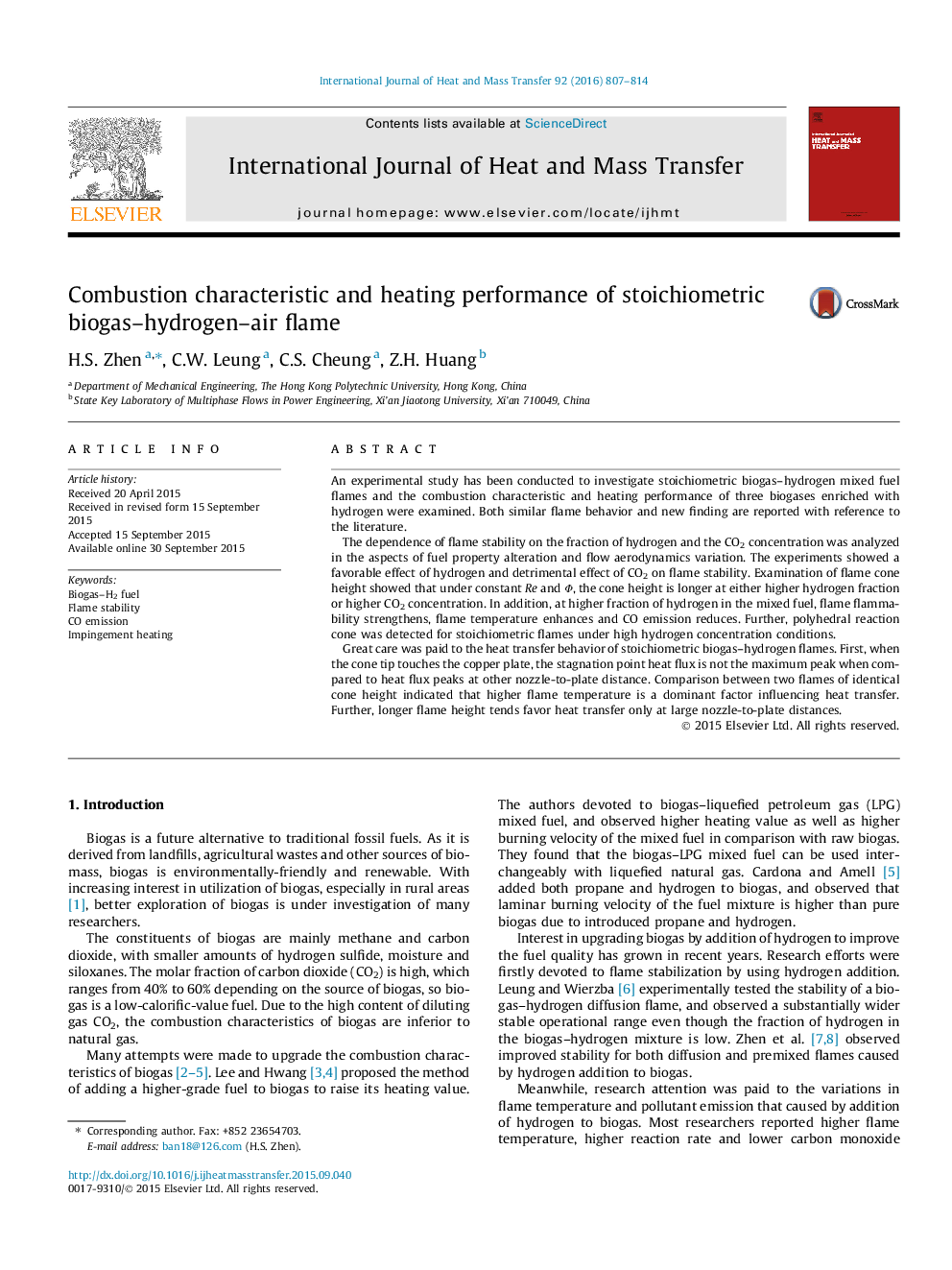| کد مقاله | کد نشریه | سال انتشار | مقاله انگلیسی | نسخه تمام متن |
|---|---|---|---|---|
| 656583 | 1458050 | 2016 | 8 صفحه PDF | دانلود رایگان |
• Biogas/air flame stability is improved when enriched with hydrogen.
• Polyhedral flame front occurs at high fractions of hydrogen.
• Peak heat flux at stagnation point is not the maximum due to weakened tip burning.
• Flame temperature contributes to heat transfer more dominantly than flame height.
An experimental study has been conducted to investigate stoichiometric biogas–hydrogen mixed fuel flames and the combustion characteristic and heating performance of three biogases enriched with hydrogen were examined. Both similar flame behavior and new finding are reported with reference to the literature.The dependence of flame stability on the fraction of hydrogen and the CO2 concentration was analyzed in the aspects of fuel property alteration and flow aerodynamics variation. The experiments showed a favorable effect of hydrogen and detrimental effect of CO2 on flame stability. Examination of flame cone height showed that under constant Re and Ф, the cone height is longer at either higher hydrogen fraction or higher CO2 concentration. In addition, at higher fraction of hydrogen in the mixed fuel, flame flammability strengthens, flame temperature enhances and CO emission reduces. Further, polyhedral reaction cone was detected for stoichiometric flames under high hydrogen concentration conditions.Great care was paid to the heat transfer behavior of stoichiometric biogas–hydrogen flames. First, when the cone tip touches the copper plate, the stagnation point heat flux is not the maximum peak when compared to heat flux peaks at other nozzle-to-plate distance. Comparison between two flames of identical cone height indicated that higher flame temperature is a dominant factor influencing heat transfer. Further, longer flame height tends favor heat transfer only at large nozzle-to-plate distances.
Journal: International Journal of Heat and Mass Transfer - Volume 92, January 2016, Pages 807–814
